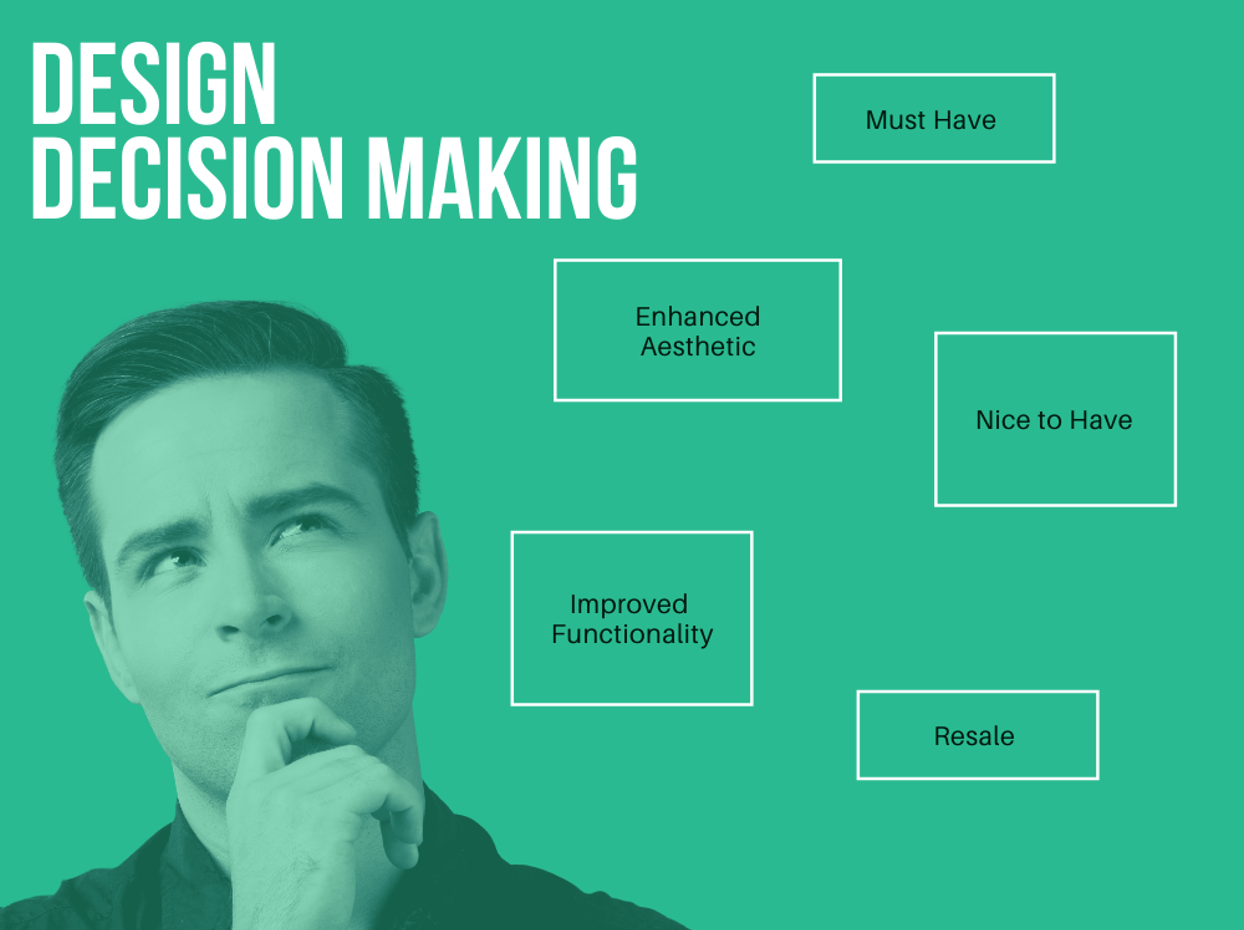Ways to Save Money
If you are planning a kitchen renovation / remodel and are looking for ways to save money on your new kitchen cabinets, look no further. There are many factors that can influence the price of your cabinets and knowing these key areas can help you maximize your budget. Here are some things to consider.
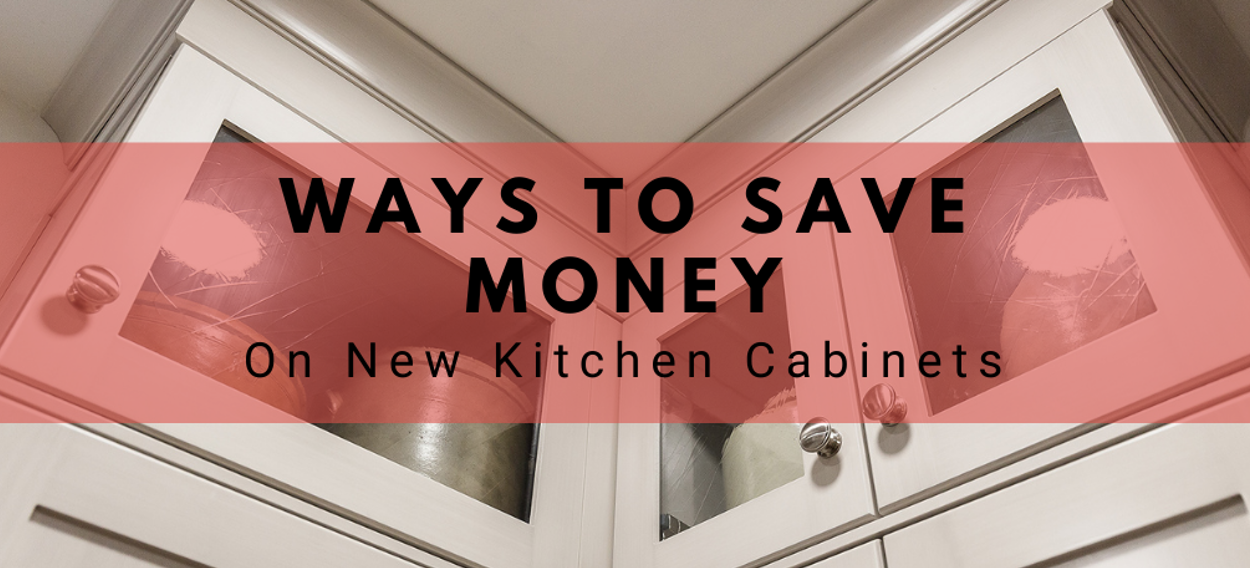
DOOR AND FRONT MATERIAL
There are many cabinet materials or substrates to choose from, most firms offer a wide variety of materials to fit a large span of budgets. The core material of the cabinet door and drawer fronts play a big role in the cost and will set the base price of your cabinets as your starting point. Believe it or not, the cabinetry doors and fronts typically account for 75% – 80% of the entire cabinet cost, based on Material, Door Style, and Finish. Here is a rough guide of pricing from low to high:
- Melamine/Laminate/TFL
- Painted MDF – 1 Piece Door
- Stained Wood – Maple, Oak, Hickory
- Painted MDF – 5 Piece Door
- Handcrafted MDF
- Handcrafted Wood
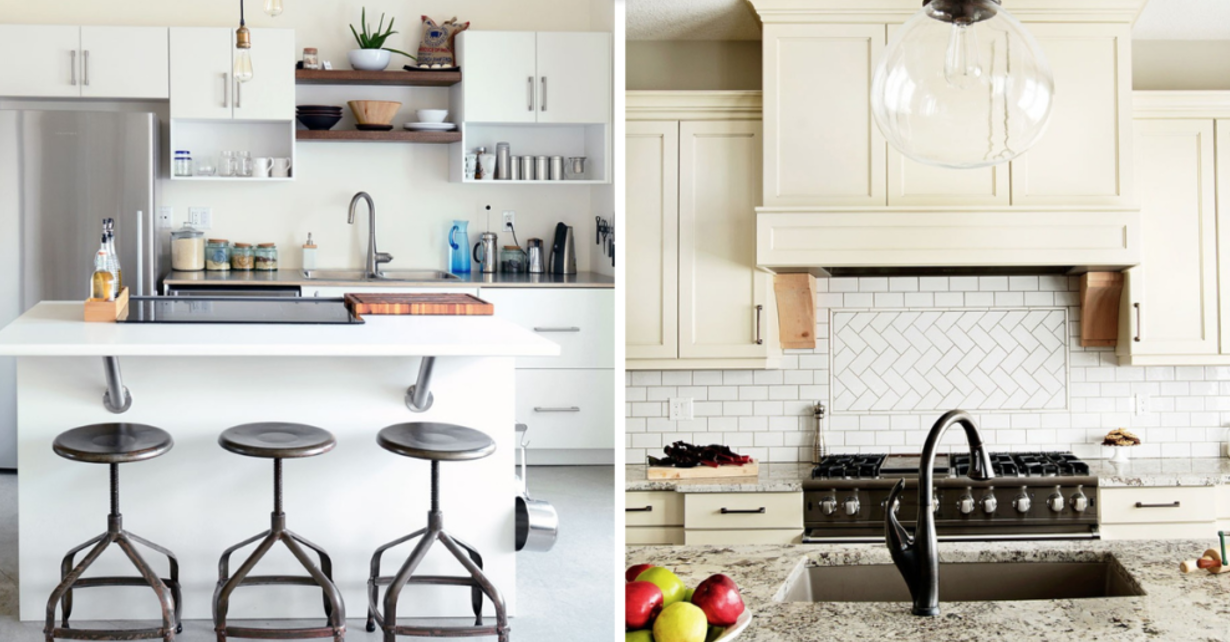
Choosing a lower cost or a cheap substrate does not always mean you will have lower durability, but keep in mind, the material will dictate what can be done with it. Some materials come prefinished, and others need to be professionally finished, either by painting or finishing in some way
FINISH
Up next is your finish premium upcharge. There are a wide variety of options including Painted and Handcrafted and finish upcharges and pricing will vary depending on how labour intensive they are. For example, painted cabinetry requires several steps and usually has a medium to high cost, while handcrafted cabinet finishes require many steps and typically demand the highest cost.
DOOR STYLE
The style, cut, and complexity of the cabinet door style will also impact price. For example, slab or flat panel cabinet fronts typically do not require as much workmanship, which is why they are often the cheapest, rather than more detailed or profiled cabinets. If you like the look of slab or flat panel cabinets, this can sometimes be a nice savings bonus.
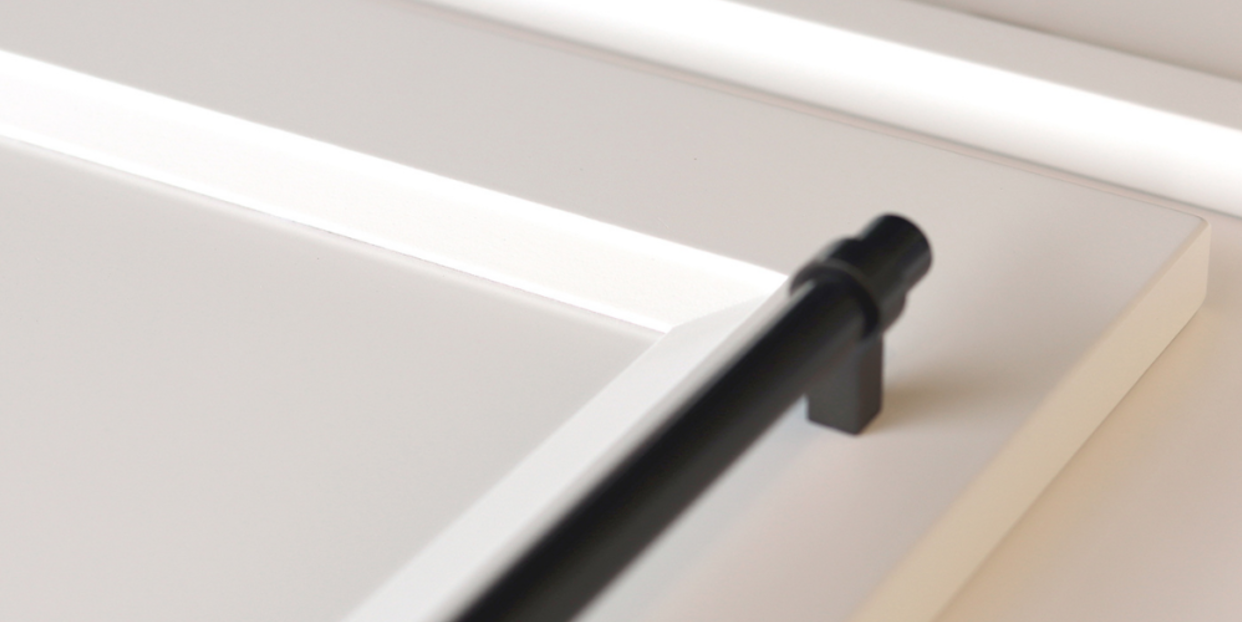
If you are considering MDF kitchen cabinets, choose a one-piece MDF door rather than a Five Piece MDF door to save money. This is because a one-piece cabinet door is made on a CNC router, rather than handmade. One-piece MDF doors and fronts are also great for environments with low humidity and dramatic seasonal changes, as cracking at door joints due to seasonal changes will not occur.
With wood cabinet doors and fronts, there are typically two door style categories, Flat Panel and Raised Panel. There are usually multiple price levels within each category, which depends on how detailed or hard to make it is. Also, the width of the stiles and rails can affect cost. For example, a narrow stile and rail door is often less expensive than a wider version, as there is less wood product / material required to build that door. For more info on what a Stile and Rail is, see the Anatomy of a 5 Piece Cabinet Door.
DRAWER BOX
Not all drawer boxes are created equally. Here are some of the main price factors that can impact your cabinet drawer box:
- Glides/Slides Quality
- Glides/Slides Extension Depth
- Glides/Slides Features [Soft Close vs. No Soft Close]
- Bottom and Back Thickness
- Colour of Box
- Overall Box Construction
Choosing a popular feature such as full extension glides, rather than the standard 3/4 extension glides, will increase your cost. Have a peek at this video highlighting the difference between 3/4 and full extension glides. Adding Soft Close to your cupboard drawers will also cost more. If you crave the warmth of Wood for your cabinet drawer boxes, consider a finger jointed Birch Dovetail Box, which is typically the highest in cost.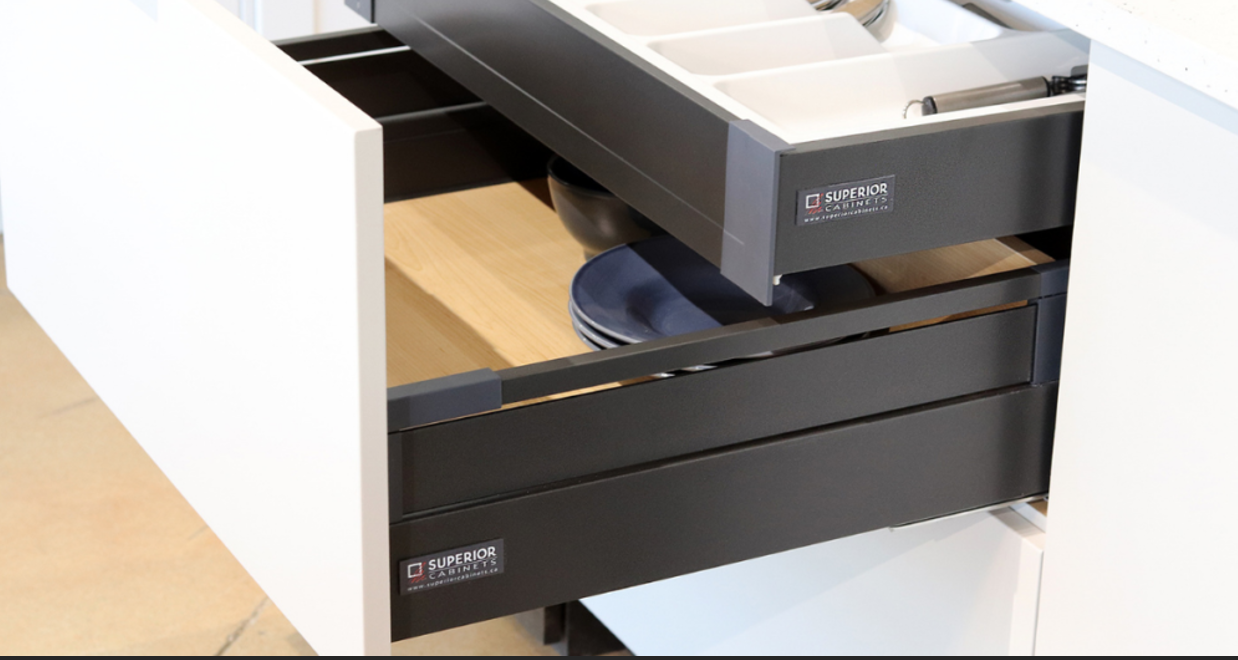
If you ask most Kitchen Design Experts, they will tell you to always invest in any moving components. Choosing the best quality drawer glides and cabinet hinges will ensure your cabinets stand the test of time.
CABINET CONFIGURATION AND COUNT
This is often an overlooked area when comparing designs and pricing, as you can fill the same space many ways. Pay special attention to the number of cases or boxes, cabinet fronts, and drawers. Simply put, the more features and complexity you have, the more it will exhaust your allowance. Some of the main cabinet configuration items that will impact your price are:
- Door and Drawer Front Quantity
- Cabinet Count – Box/Case Quantity
- Tall Cabinet Quantity [Pantries or Tall Wall Oven]
- Specialty Cabinets with Glass and Finished Interior Lining
- Wall Cabinet Height. [For Example, 30” Wall Cabinets vs. 39” Wall Cabinets]
These are extremely important things to consider when comparing “apples to apples”. Selecting less of the above will help you get low budget kitchen cabinets.
MOULDINGS, TRIMS, AND HARDWARE
Finishing embellishments including cabinetry mouldings and trims are also something to be considered when setting your budget. For basic budgets, consider no crown or a single stage crown moulding. For more elaborate budgets, consider a double or triple staged crown moulding. In conclusion, the more material and moulding details you have, the higher the cost, and don’t forget about labour to install those items.
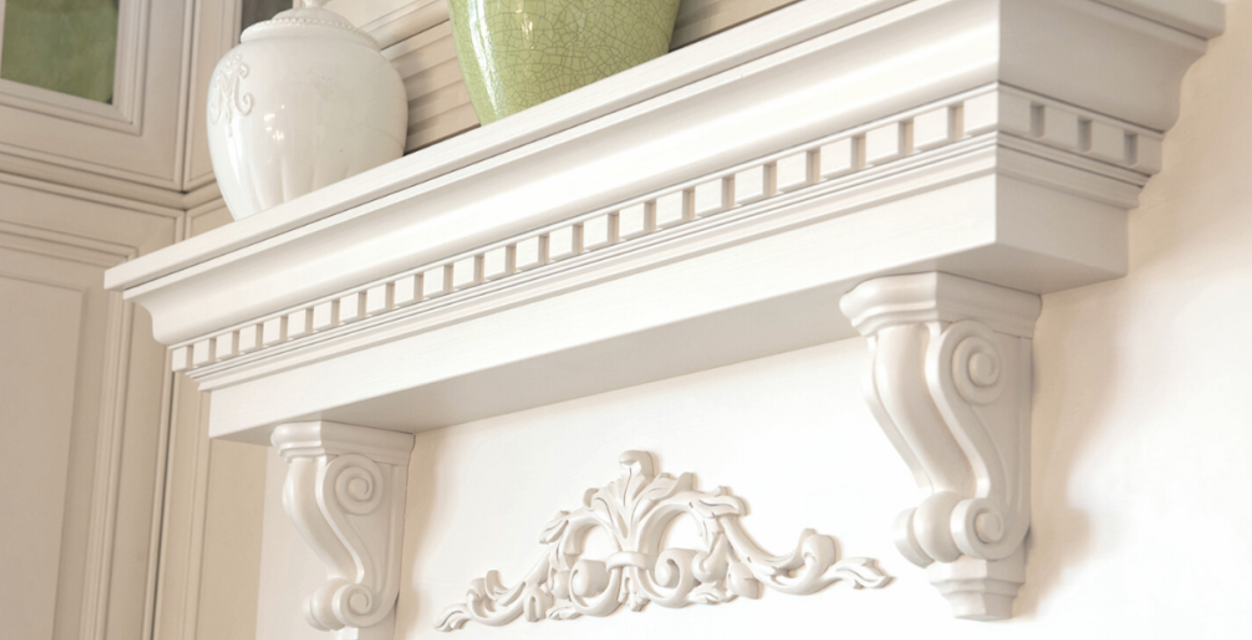
Decorative cabinet hardware [Handles/Knobs] protect your cabinetry finish, keeping them looking newer much longer. Choosing handles or knobs can be daunting for some, but remember they are the unsung hero of your cabinets. See Getting a Handle on Cabinet Hardware for more help on this.
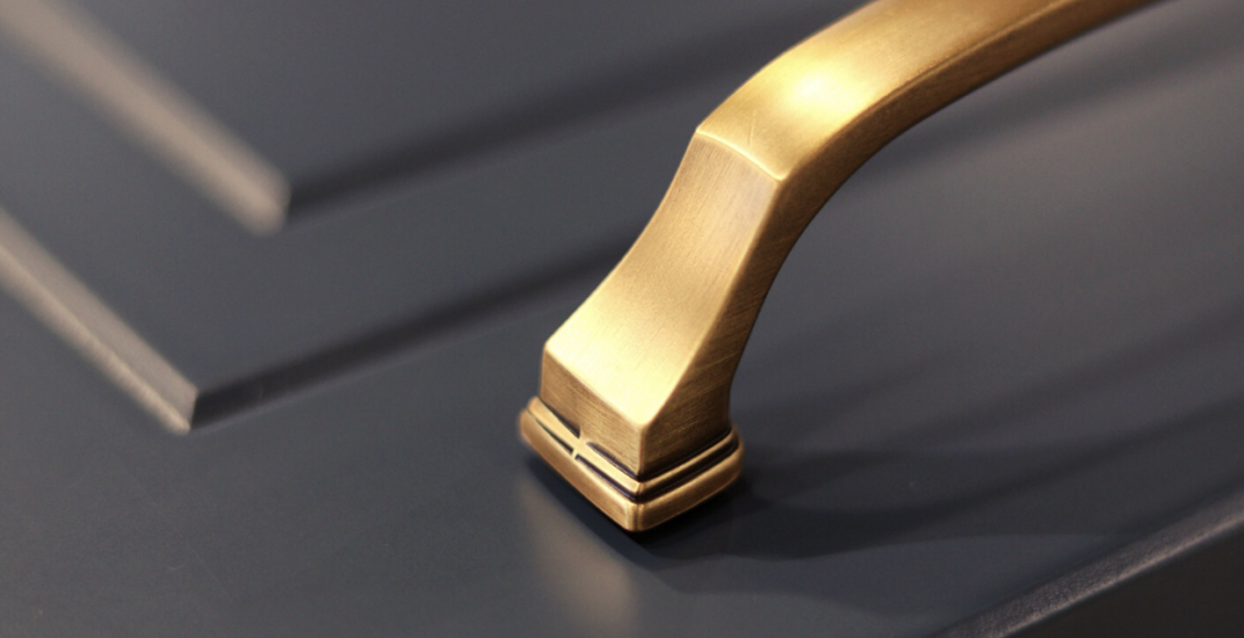
How much do cabinet handles cost? There are many factors that impact the price such as brand, style, finish, country of origin, etc. Yes, there are some dirt-cheap handles/knobs available, but be mindful of the quality. On the low side a good quality simple / basic knob or handle can cost $6 – $8 /each for the unit and fitting screw. Mainstream cabinet hardware can be in the $10 – $15 /each range. Premium handles can cost in the range of $25 – $40 /each. Most average kitchen renovations/remodels typically have 30 – 40 handles, so you do the math.
DECISION-MAKING RULES
There are many factors that guide homeowners as they make crucial budgetary design decisions for their cabinets. Top Kitchen Design Experts like to use these decision-making rules with their clients as a guide to help them through the design consultation process.
- Must Have
- Nice to Have
- Improved Functionality
- Enhanced Aesthetic
- Resale
Having a nice balance of the above decision-making categories can help homeowners have a well-rounded outcome. The important thing is to not be too heavily weighted in only one category. For example, some homeowners choose taller wall cabinets for functionality to gain more storage, while others may choose taller wall cabinets for only aesthetic reasons to fill the void for looks. This can be a heavy price to pay for storage you may never use, which is something to contemplate.
Latest Articles
Custom Woodwork From Our Craftsman’s Bench to Your Home
Wedgewood Cabinetry is the highest quality custom cabinetry in Colorado. Our wood is locally sourced, which means it’s acclimated to the unique Denver climate, minimizing expansion, contraction, and discoloration throughout the entire lifespan of the cabinets. We offer exotic wood and inlays with unlimited design options, even providing our unique cabinet designs in a wide variety of material outside of wood, giving our Denver customers the unlimited potential to complete the look of your dreams.
